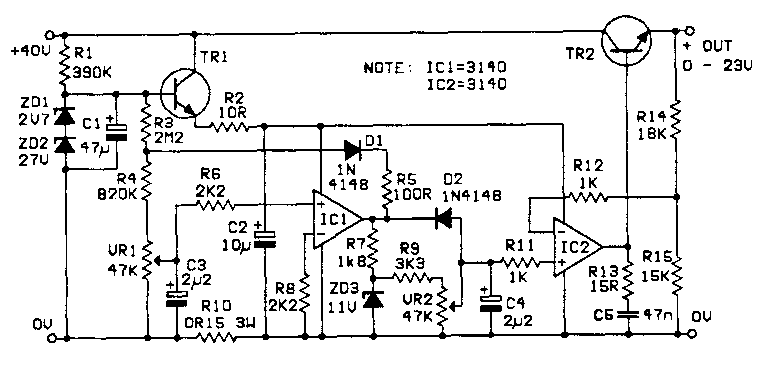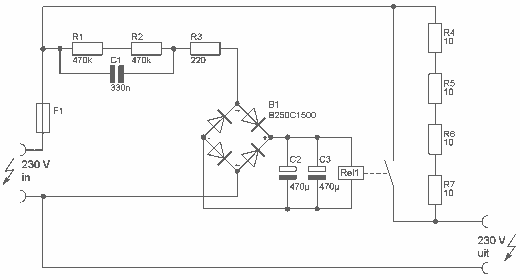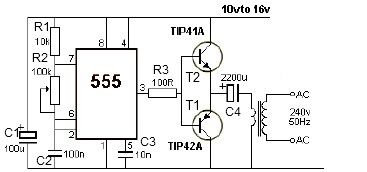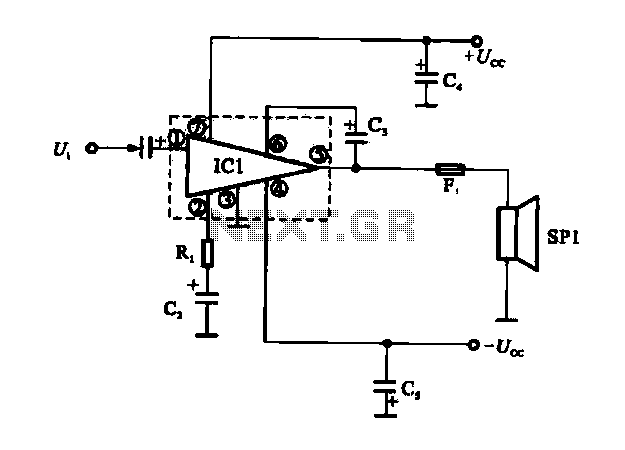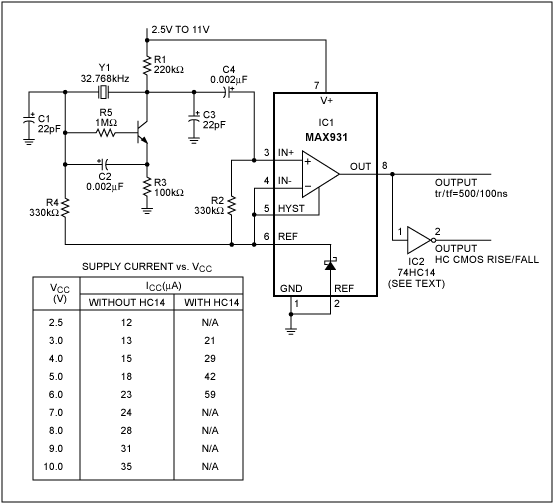
12-220V Power Inverter
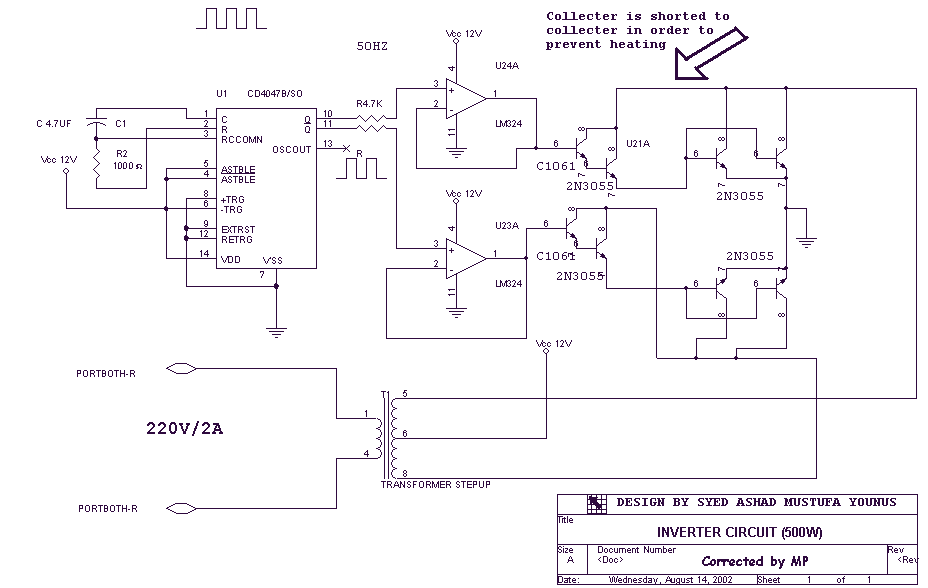
Using this circuit you can convert the 12V dc into the 220V Ac. In this circuit, 4047 is used to generate the square wave of 50Hz and amplify the current and then amplify the voltage by using the step transformer. The basic formula is P=VI and between input output of the transformer we have Power input = Power output. For example, if we want a 220W output at 220V, then we need 1A at the output. Then at the input, we must have at least 18.3V at 12V because: 12V*18.3 = 220V*1. So you have to wind the step-up transformer 12V to 220V but the input winding must be capable of bearing 20A.
This circuit utilizes a 4047 IC, which functions as an astable multivibrator to produce a square wave signal at a frequency of 50Hz. The square wave output is essential for driving the transformer, which is responsible for stepping up the voltage from 12V DC to 220V AC. The 4047 is configured to operate in its astable mode, generating a continuous square wave output that can be adjusted for frequency through external resistors and capacitors.
The output from the 4047 is fed into a transistor or a MOSFET, which acts as a switch to amplify the current. This stage is crucial as the transformer requires sufficient current to operate effectively. The transistor/MOSFET must be selected based on the maximum current and voltage ratings, ensuring it can handle the required power levels without overheating.
The transformer is designed to step up the voltage from 12V to 220V. The turns ratio of the transformer is calculated based on the desired output voltage and the input voltage. For a target output of 220V from 12V, the turns ratio must be approximately 18.3:1. The primary winding of the transformer must be capable of handling a current of at least 20A, ensuring that the circuit can provide the necessary power without exceeding the thermal limits of the components.
Power conservation principles dictate that the input power (P_input) must equal the output power (P_output), allowing for the calculation of input current requirements. For example, to achieve a 220W output at 220V, the output current would be 1A. Consequently, the input voltage must be sufficiently high to ensure that the power equation holds true: 12V multiplied by the input current should equal 220W.
Overall, this circuit provides a practical solution for converting low-voltage DC power to high-voltage AC power, suitable for various applications, including powering household appliances or other electronic devices requiring 220V AC input. Proper attention to component specifications, including the transformer design and switching devices, is critical for safe and efficient operation.Using this circuit you can convert the 12V dc in to the 220V Ac. In this circuit 4047 is use to generate the square wave of 50hz and amplify the current and then amplify the voltage by using the step transformer. The basic formula is P=VI and between input output of the transformer we have Power input = Power output.
For example if we want a 220W output at 220V then we need 1A at the output. Then at the input we must have at least 18.3V at 12V because: 12V*18.3 = 220v*1. So you have to wind the step up transformer 12v to 220v but input winding must be capable to bear 20A. 🔗 External reference
This circuit utilizes a 4047 IC, which functions as an astable multivibrator to produce a square wave signal at a frequency of 50Hz. The square wave output is essential for driving the transformer, which is responsible for stepping up the voltage from 12V DC to 220V AC. The 4047 is configured to operate in its astable mode, generating a continuous square wave output that can be adjusted for frequency through external resistors and capacitors.
The output from the 4047 is fed into a transistor or a MOSFET, which acts as a switch to amplify the current. This stage is crucial as the transformer requires sufficient current to operate effectively. The transistor/MOSFET must be selected based on the maximum current and voltage ratings, ensuring it can handle the required power levels without overheating.
The transformer is designed to step up the voltage from 12V to 220V. The turns ratio of the transformer is calculated based on the desired output voltage and the input voltage. For a target output of 220V from 12V, the turns ratio must be approximately 18.3:1. The primary winding of the transformer must be capable of handling a current of at least 20A, ensuring that the circuit can provide the necessary power without exceeding the thermal limits of the components.
Power conservation principles dictate that the input power (P_input) must equal the output power (P_output), allowing for the calculation of input current requirements. For example, to achieve a 220W output at 220V, the output current would be 1A. Consequently, the input voltage must be sufficiently high to ensure that the power equation holds true: 12V multiplied by the input current should equal 220W.
Overall, this circuit provides a practical solution for converting low-voltage DC power to high-voltage AC power, suitable for various applications, including powering household appliances or other electronic devices requiring 220V AC input. Proper attention to component specifications, including the transformer design and switching devices, is critical for safe and efficient operation.Using this circuit you can convert the 12V dc in to the 220V Ac. In this circuit 4047 is use to generate the square wave of 50hz and amplify the current and then amplify the voltage by using the step transformer. The basic formula is P=VI and between input output of the transformer we have Power input = Power output.
For example if we want a 220W output at 220V then we need 1A at the output. Then at the input we must have at least 18.3V at 12V because: 12V*18.3 = 220v*1. So you have to wind the step up transformer 12v to 220v but input winding must be capable to bear 20A. 🔗 External reference

